Sempervivum vs. Aeonium: A Succulent Comparison Guide
Have you gotten hooked on the succulent craze sweeping gardens everywhere? If so, you’ve probably noticed some funky-looking plants that resembled a plump rosette or bursting cabbage. But were you scratching your head, unable to tell those succulents apart?
No need to worry, you’re not alone! Many new succulent fans mistake Sempervivum for Aeonium and vice versa. These two stunners may seem like succulent twins at first glance, but they actually have quite a few differences hiding beneath those fleshy leaves.
In this article, we’ll reveal the telltale signs to identify each one and spotlight their key similarities too. Get ready to become a Sempervivum vs. Aeonium master by the end! The succulent showdown begins now.
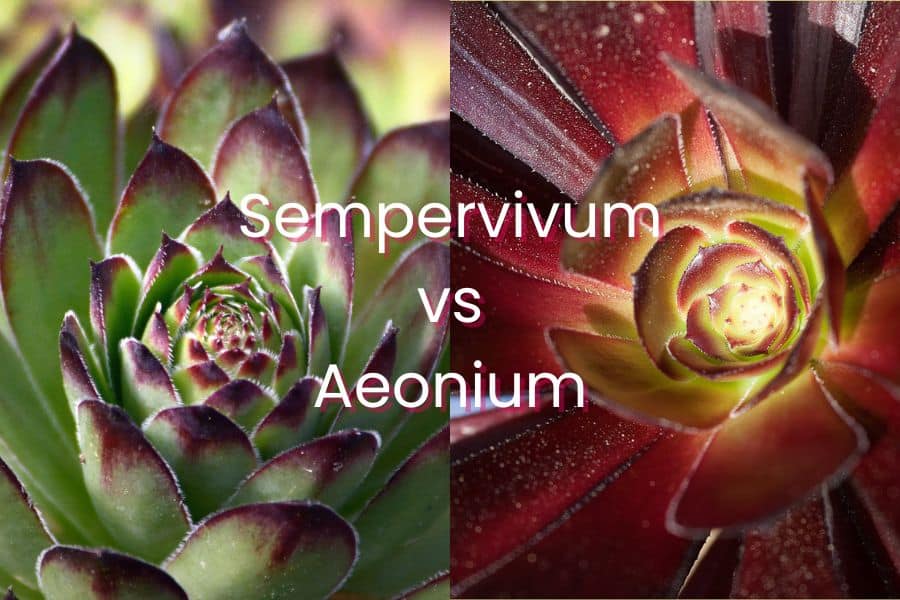
Contents
The Origin Story
One of the biggest distinctions between Sempervivum and Aeonium lies in their native homelands and ancestral roots. Where a plant species originated plays a major role in its evolved traits and cultural lore. Sempervivum, often called hen-and-chicks, hails from a vast area spanning the mountain ranges across Europe, North Africa and parts of Asia. These tough succulents are native to rocky, sunny alpine and subalpine elevations reaching up to around 9,900 feet!
Their name “Sempervivum” has Latin roots – “semper” meaning “always” and “vivus” meaning “alive” – referring to their ability to survive harsh, unforgiving mountain conditions. With over 40 different species, Sempervivum can be found growing wild every where from the Alps and Carpathian mountains to the Atlas Mountains of Morocco to the Armenian highlands.
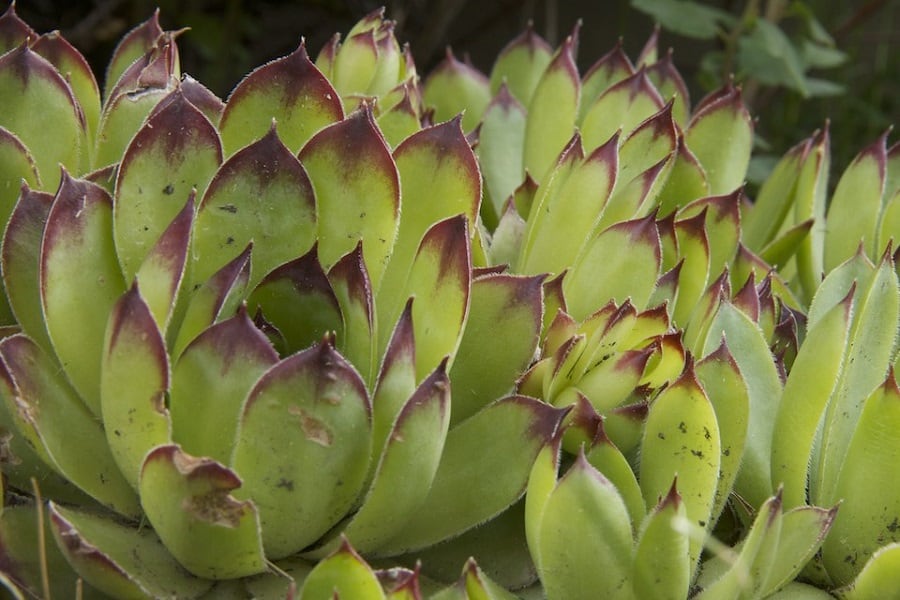
In contrast, the genus Aeonium consists of around 35 species that originated from the Canary Islands, a Spanish archipelago just off the northwest coast of Africa. These subtropical islands gave rise to Aeonium’s exotic, sun-splashed looks. The name Aeonium comes from the ancient Greek word “aionios” meaning “ageless” or “eternal.”
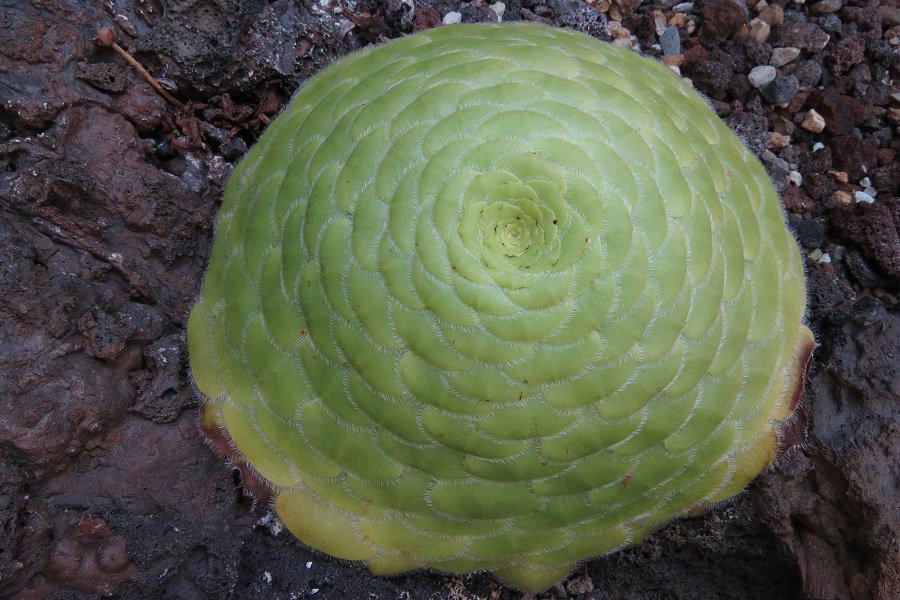
While some Aeonium species ventured to nearby areas like Madeira, Morocco and East Africa, the majority are endemic to the Canary Islands. This isolated island chain provided the perfect temperate, ocean-influenced climate for the drought-tolerant yet moisture-loving Aeoniums to evolve over millennia.
So while one succulent cut its teeth on the rugged slopes of Europe’s peaks, the other blossomed in the gentle maritime atmosphere of the Canary Islands off Africa’s shores. Their ancestral homelands gave each a distinct set of adaptations reflected in their appearances and care needs today.
Appearance-Wise
While both sport a rosette shape, their leaf looks diverge. Sempervivum leaves are pointed and fleshy, colored in shades of blue, green, red, or coppery hues. Aeonium shows off large, rounded leaves with a waxy, glossy finish in vibrant reds, yellows, whites and greens.
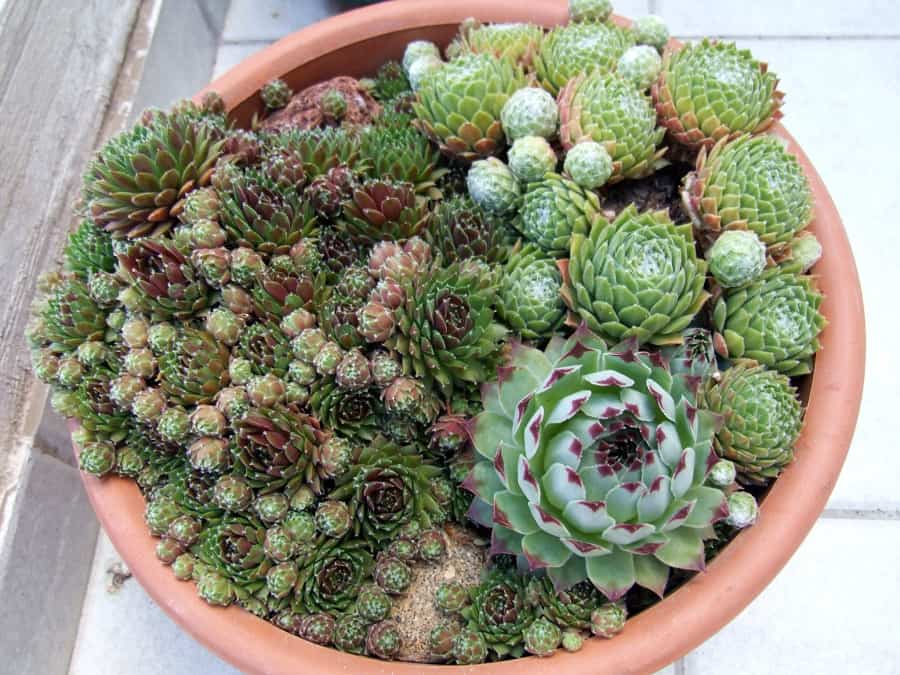
As for their growth habits, Sempervivum hugs the ground in tight, spreading mats up to 2 feet wide. Many Aeonium varieties take a taller, tree-like form with rosettes stacked in funky patterns that can reach over 6 feet high!
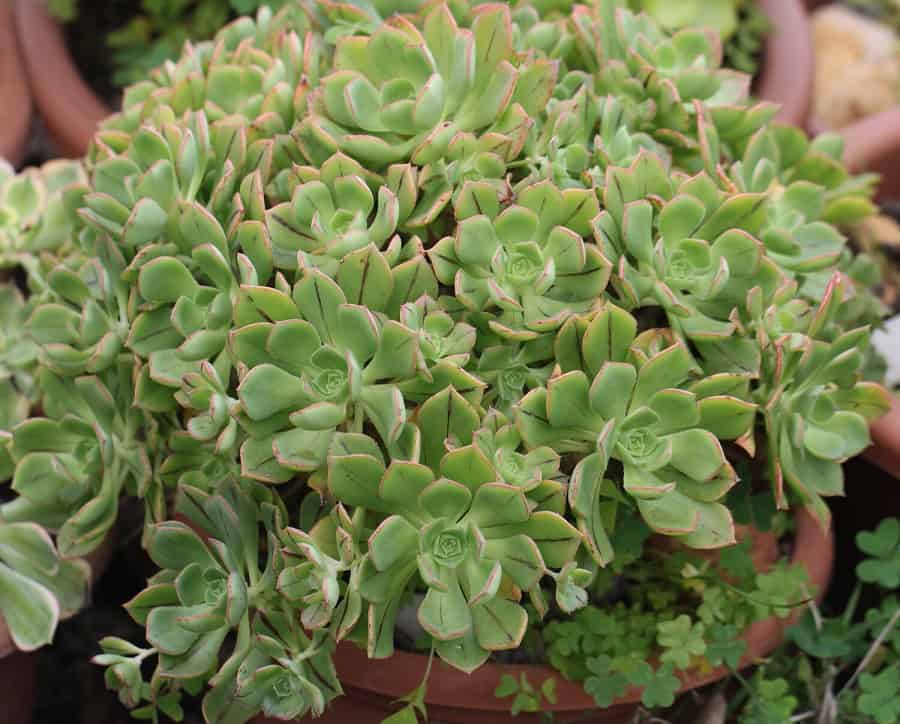
Blooming Beauties?
During the warm months, both unleash some flower power, but in very different styles. Sempervivum sprouts dainty, star-shaped blooms on fleshy stems. Aeonium’s subtle, starburst flowers appear in clusters right in the center of the rosette.
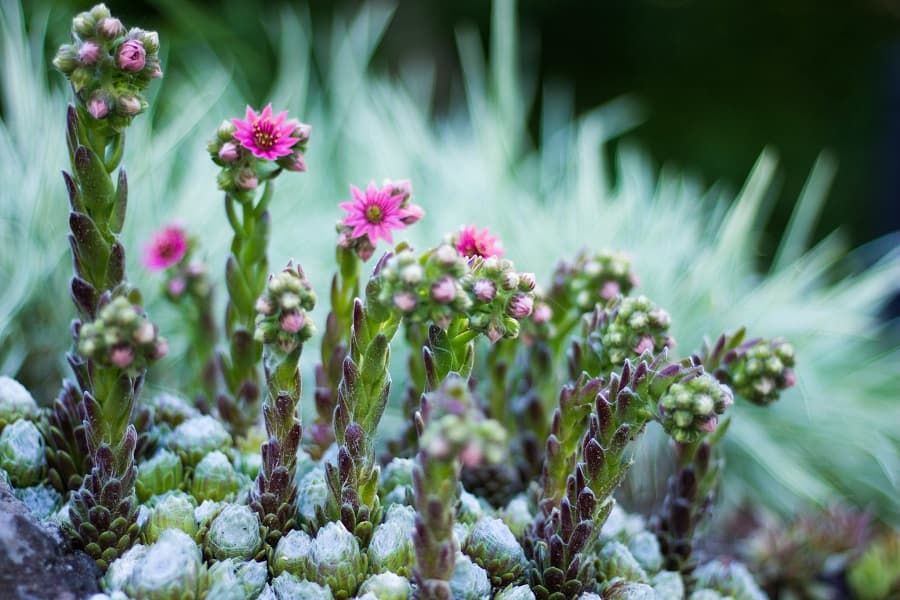

Growth Cycles
Sempervivum is labeled a “perennial” succulent, meaning it comes back yearly from its root system. It has a moderate growth rate, producing offsets (nicknamed “chicks”) fairly quickly around the main plant (“hen”).
Aeonium grows at a snail’s pace, sometimes taking 5 years just to bloom! But it makes up for that by being monocarpic – after flowering, the main plant dies off but leaves behind tons of new offsets to carry on.
Get Propagating
Luckily, both types are easy to multiply. Sempervivum can create new plants from its offsets, seeds, or by dividing the rosette clump. With Aeonium, just snip off a stem piece and let it root.
Related Posts:
Sempervivum vs Echeveria: 6 Key Differences and Similarities
Aeonium vs Echeveria: 4 Key Differences and Similarities
The Care Factors
Despite their differences, Sempervivum and Aeonium have some common succulent needs:
- Well-draining soil (add sand or perlite if needed)
- Bright sunlight (at least 6 hours for Semps)
- Infrequent watering when soil is dry
A few care quirks – Sempervivum is rugged and cold-hardy down to -22°F! Aeonium sulks if temperatures dip below 50°F for too long. And eir unique looks and traits. Which fleshy friend fits your garden style best?
So there you have it! Even though Sempervivum and Aeonium may seem like long-lost succulent twins, you’re now an expert on deciphering their unique looks and traits. Which fleshy friend fits your garden style best?
